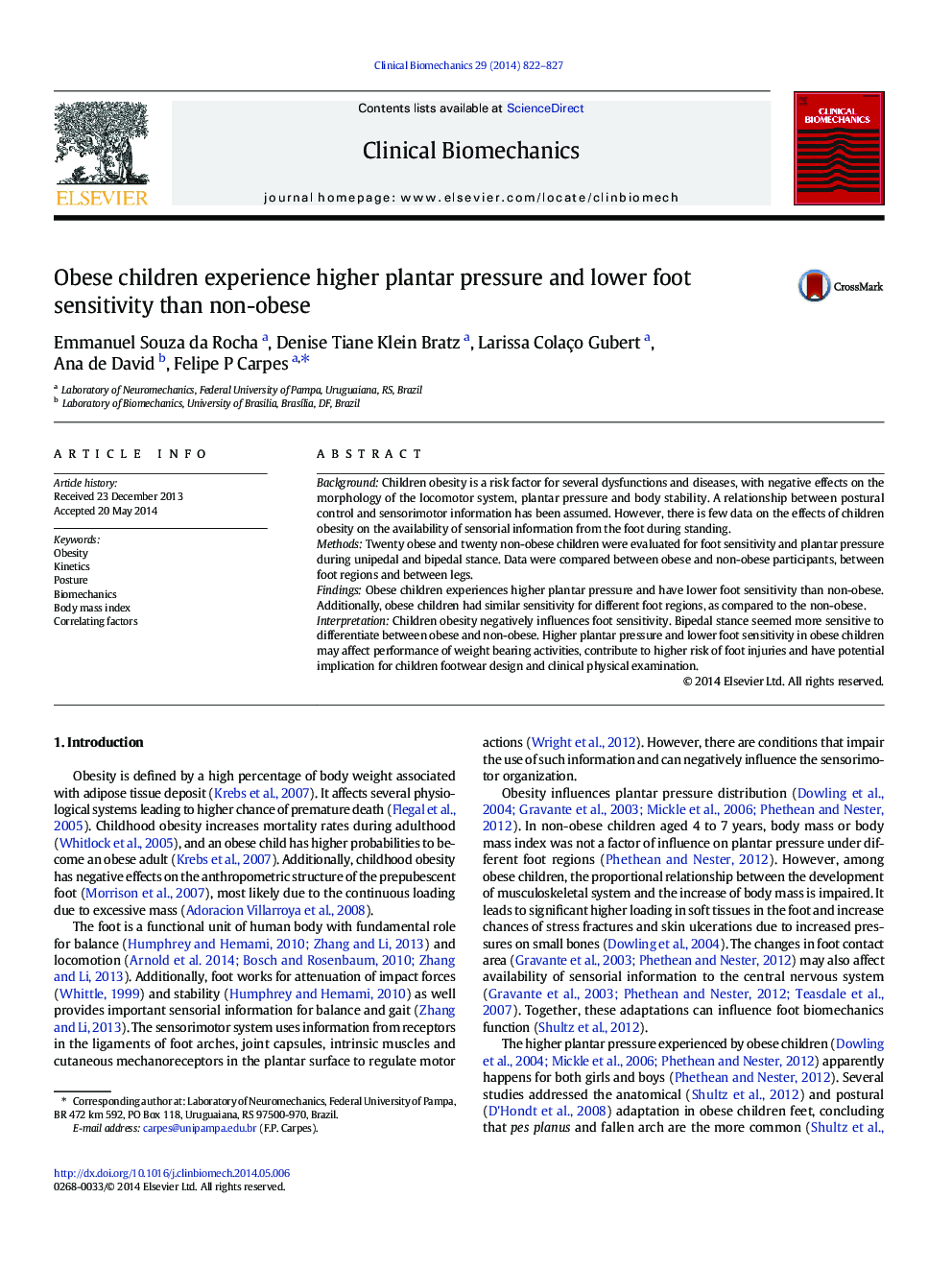| Article ID | Journal | Published Year | Pages | File Type |
|---|---|---|---|---|
| 6204900 | Clinical Biomechanics | 2014 | 6 Pages |
â¢Children obesity negatively influences foot sensitivity.â¢Obese children have similar sensitivity across all foot regions.â¢Bipedal stance differentiates plantar pressure between obese and non-obese.â¢Foot sensitivity should be included in physical exam in the obese children.â¢Foot sensitivity influences plantar pressure in the obese children.
BackgroundChildren obesity is a risk factor for several dysfunctions and diseases, with negative effects on the morphology of the locomotor system, plantar pressure and body stability. A relationship between postural control and sensorimotor information has been assumed. However, there is few data on the effects of children obesity on the availability of sensorial information from the foot during standing.MethodsTwenty obese and twenty non-obese children were evaluated for foot sensitivity and plantar pressure during unipedal and bipedal stance. Data were compared between obese and non-obese participants, between foot regions and between legs.FindingsObese children experiences higher plantar pressure and have lower foot sensitivity than non-obese. Additionally, obese children had similar sensitivity for different foot regions, as compared to the non-obese.InterpretationChildren obesity negatively influences foot sensitivity. Bipedal stance seemed more sensitive to differentiate between obese and non-obese. Higher plantar pressure and lower foot sensitivity in obese children may affect performance of weight bearing activities, contribute to higher risk of foot injuries and have potential implication for children footwear design and clinical physical examination.
